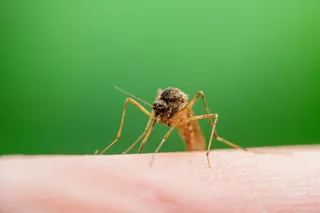Here's another thing to keep the world's epidemiologists up at night: The new strain of bird flu known as H7N9 can mutate to be resistant to the only influenza therapy available. And it can do so without losing its ability to transmit between hosts.
H7N9 isa flu strain that resides naturally in wild waterfowl. But it showed up in domestic birds in the poultry markets of eastern China earlier this year. From there, the virus spread to humans, mostly through direct contact with infected poultry. So far, H7N9 infections have been confirmed in more than 140 people in east Asia, 45 of whom have died.
This particular influenza strain worries virologists for two reasons. One,it is new to humans, which means we have had no chance to acquire immunity to it. And two, it has a high mortality rate. A study
, published today in Nature Communications, shows that a ...













